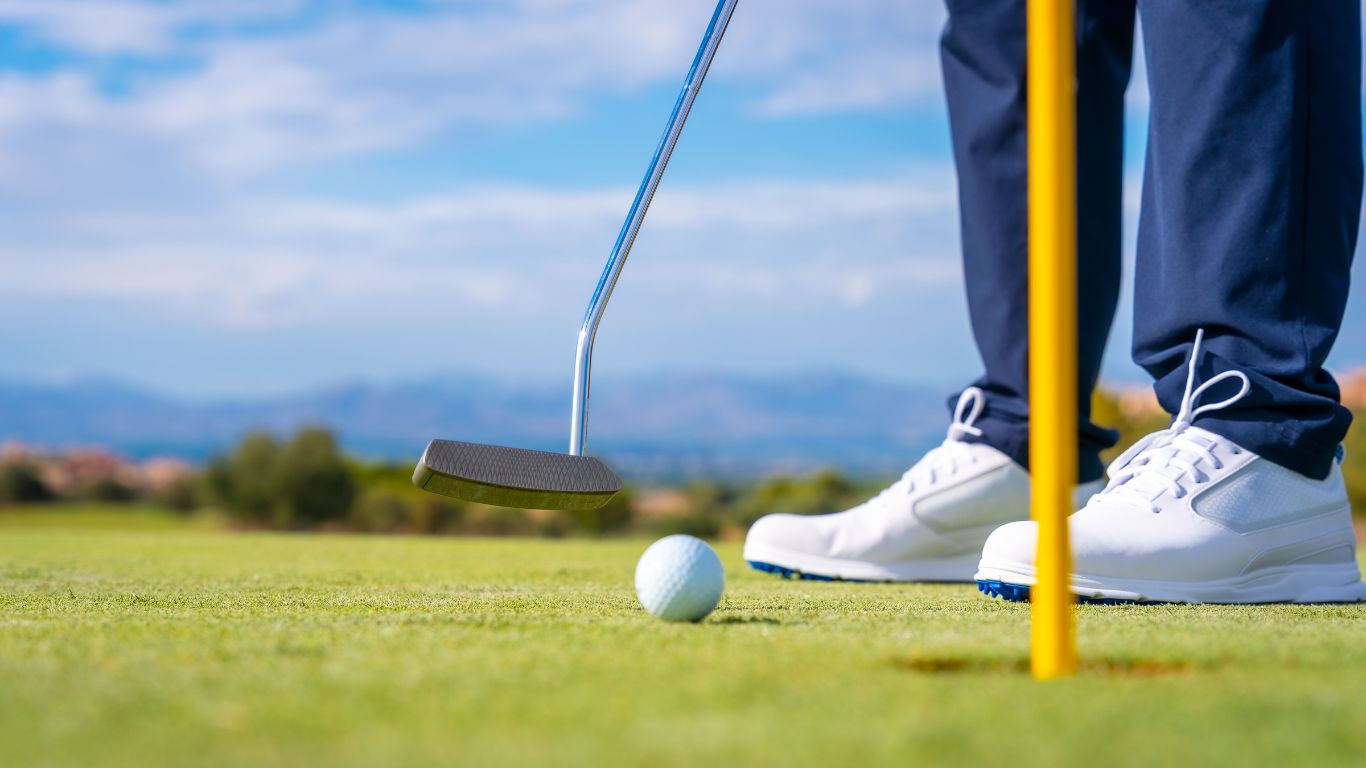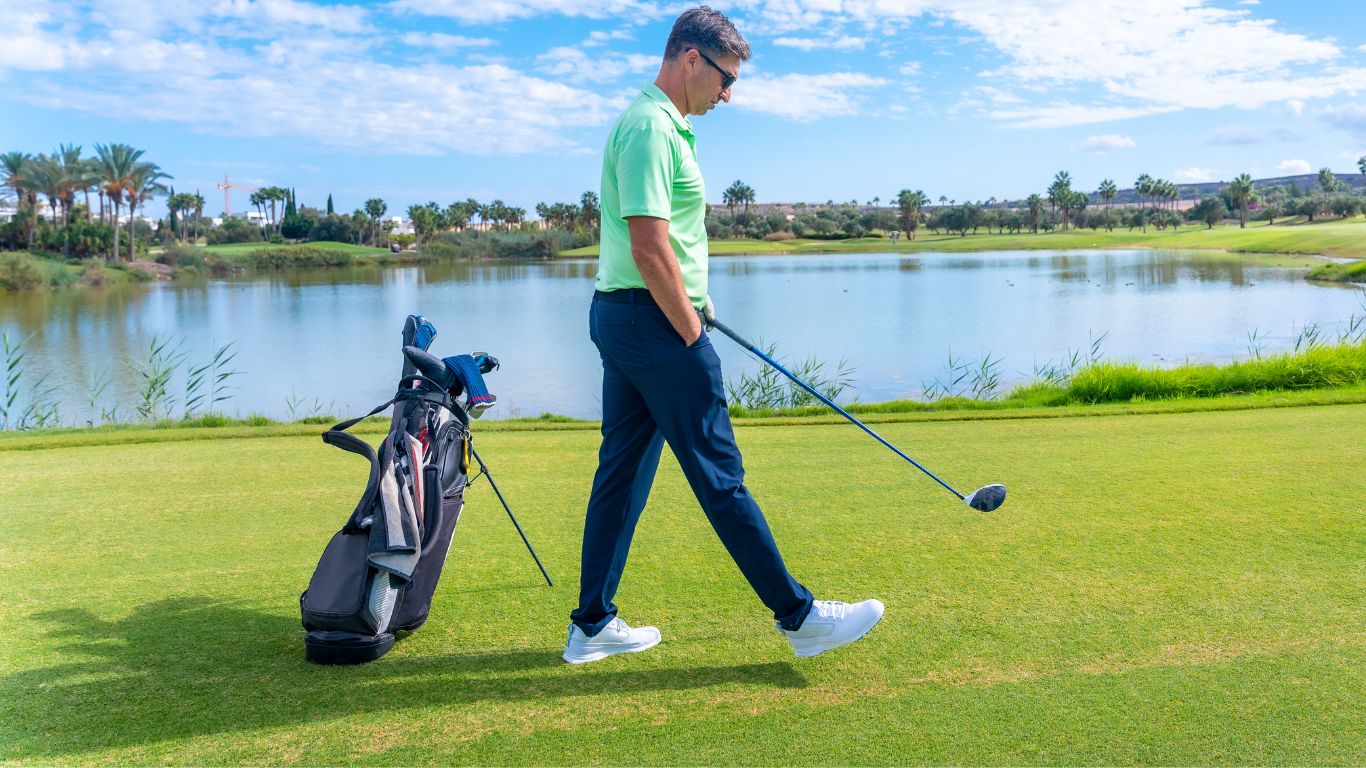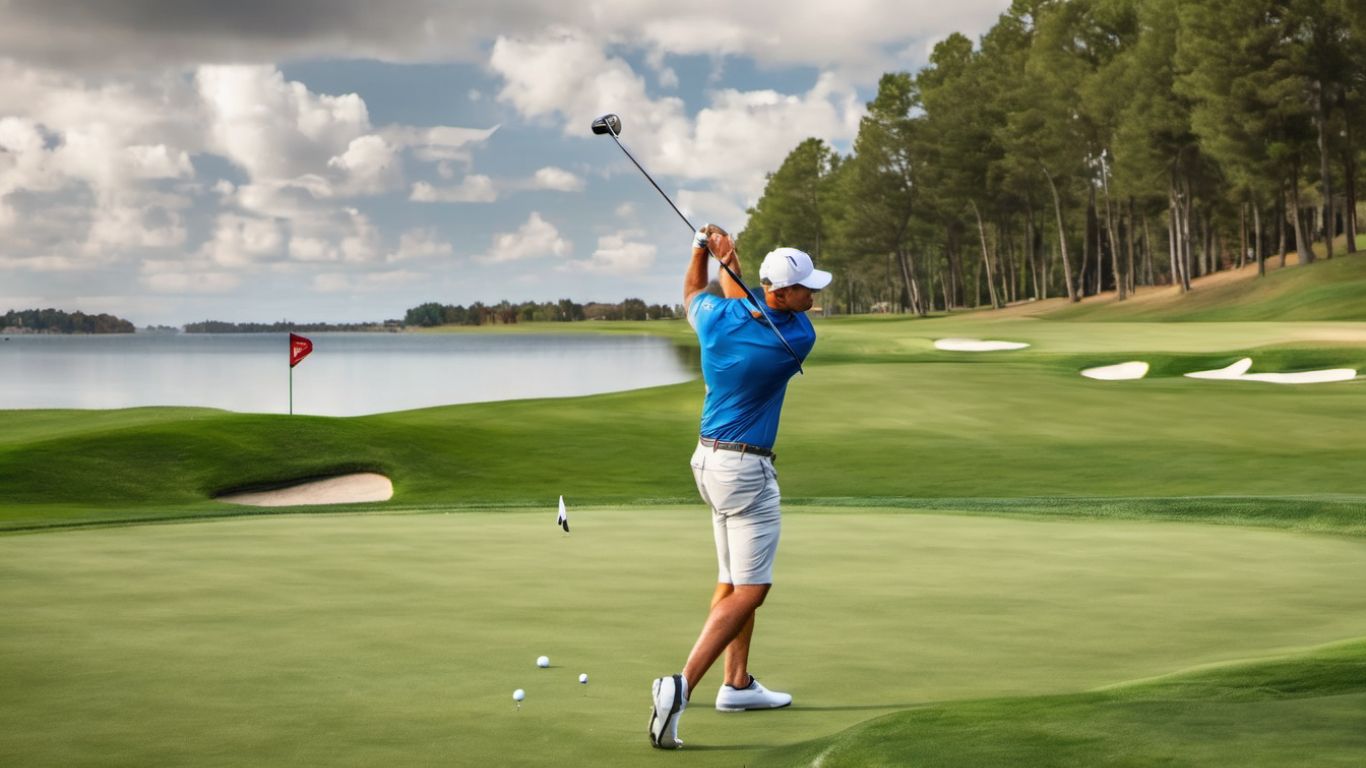If you’re struggling with a slice in your golf game, you’re not alone. Many golfers, from beginners to pros, have faced the frustration of watching their ball veer off to the right (for right-handed players) instead of traveling in a straight line down the fairway. However, the good news is that a slice is a common issue that can be fixed with some practice and adjustments to your swing technique.
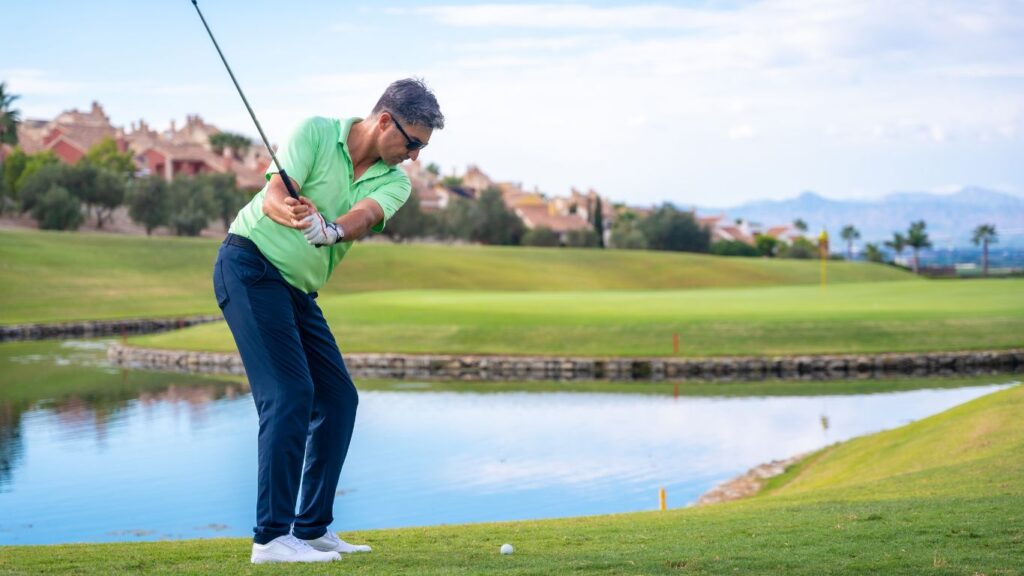
Fix a slice
In this article, we’ll explore some tips and techniques to help you straighten out your shots and eliminate that pesky slice. From adjusting your grip and stance to focusing on your club path and follow-through, there are a variety of strategies that can help correct your slice and improve your overall golf game. So, if you’re tired of seeing your ball slice off into the rough, keep reading to learn how to fix that slice and start hitting straighter shots on the course.
Common causes of a slice
A slice in golf can be one of the most frustrating things for any golfer to deal with. That dreaded shot that starts straight only to curve sharply to the right (for right-handed players) or the left (for left-handed players) can ruin a good round and leave you scratching your head, wondering what went wrong. But fear not; there are common causes of a slice in golf that can be identified and corrected.
One of the most common causes of a slice is an open clubface at impact. This means that the clubface is pointing to the right (for right-handed players) or the left (for left-handed players) of the target at the moment of impact. When this happens, the ball will naturally start straight but then curve in the opposite direction of where the clubface is pointing. To correct this, make sure that your clubface is square at impact by focusing on your grip, alignment, and swing path.
Another common cause of a slice is an outside-to-inside swing path. This means that your club is coming from outside the target line and cutting across the ball at impact. When this happens, the ball will spin to the right (for right-handed players) or the left (for left-handed players), resulting in a slice. To fix this issue, focus on swinging on a more inside-to-outside path by keeping your swing plane on the correct path and avoiding coming over the top.
Furthermore, an improper weight shift can also lead to a slice in golf. When your weight is not shifting correctly from your back foot to your front foot during the swing, it can cause your body to open up too soon and your club to come across the ball, resulting in a slice. To avoid this, work on maintaining a proper weight shift by starting with your weight on your back foot at the address, shifting it to your front foot during the backswing, and then turning it back to your front foot on the downswing.
Lastly, grip pressure can play a significant role in causing a slice in golf. Gripping the club too tightly can restrict your wrist action, leading to an open clubface at impact and a slice. To correct this, make sure to grip the club with a light, neutral grip that allows your wrists to hinge and release naturally through the swing.
Proper grip and stance
Having the correct grip and stance in golf is crucial in fixing a slice in your swing. Your grip and stance play a significant role in how you approach the ball and how you deliver the club’s face-to-impact. Making sure your grip and stance are correct can help you hit straighter shots and eliminate that pesky slice from your game.
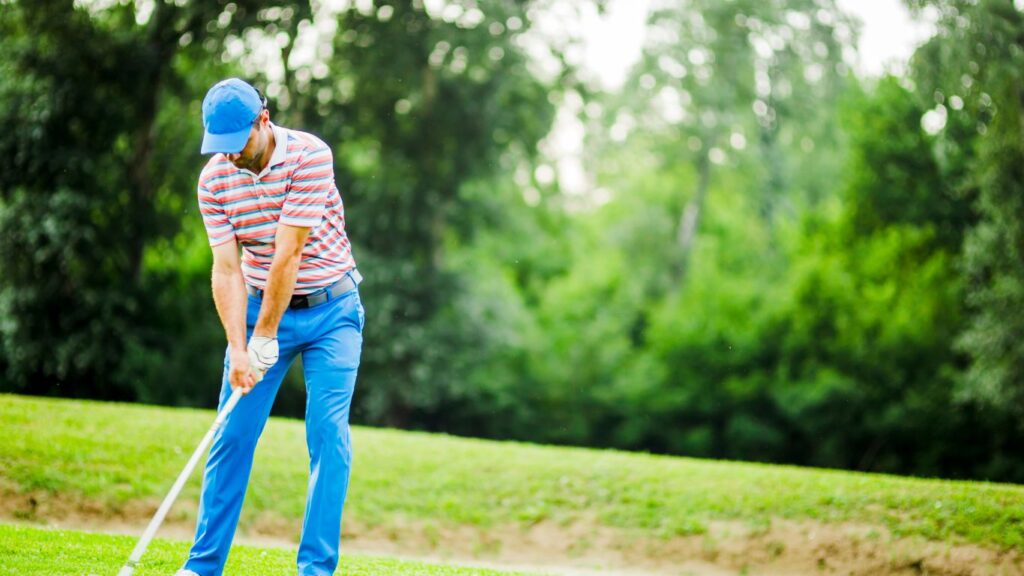
Let’s start with the grip. Your grip is how you hold the club, and it can significantly impact the position of the club face at impact. To fix a slice, you want to make sure you have a neutral grip. This means your hands are not turned too far to the right (for a right-handed golfer) or too far to the left. A neutral grip allows the club face to come back to impact square rather than open or closed, which can lead to a slice.
To achieve a neutral grip:
- Start by placing the club in your left hand (for a right-handed golfer) with the club face square to your target.
- Wrap your fingers around the club, making sure your palm is facing towards your target.
- Place your right hand on the club so that your left thumb fits into the lifeline of your right palm. Your grip pressure should be firm but not too tight, allowing for a free and fluid swing.
Now, let’s talk about stance. Your stance is how you position your body in relation to the ball and target. To fix a slice, you want to have a square stance, meaning your body is aligned parallel to your target line. This alignment helps you swing the club on the correct path, reducing the chances of hitting a slice.
To achieve a square stance, start by positioning the ball in line with the inside of your left heel (for a right-handed golfer). Your feet should be shoulder-width apart, with your weight evenly distributed between both feet. Your hips, shoulders, and feet should all be parallel to your target line. This alignment sets you up for a more accurate and consistent swing, helping you to eliminate that slice from your game.
Remember, your grip and stance are the foundation of your swing. By ensuring you have a neutral grip and a square stance, you give yourself the best possible chance to hit straighter shots and fix that slice in your game. Practice these fundamentals on the driving range and pay close attention to how they impact your ball flight. With time and dedication, you can improve your grip and stance, leading to more consistent and accurate shots on the golf course.
Swing plane adjustments
When it comes to fixing a slice in golf, one of the most important factors to consider is your swing plane. The swing plane is the angle at which the club travels as it moves through the ball, and an incorrect swing plane can often lead to a slice.
One common reason for a slice is an over-the-top swing plane, where the club comes down on a steep angle from outside the target line. This can cause the clubface to open up at impact, sending the ball to the right (for right-handed golfers) and creating that frustrating slice.
To correct this, you’ll want to focus on making adjustments to your swing plane. One technique to try is to work on coming at the ball from a more inside path. This means bringing the club down on a shallower angle, which can help to square up the clubface at impact and eliminate the slice.
You can work on achieving a better swing plane by practicing a few essential drills. One proper drill is the “inside approach” drill, where you place a headcover just outside the ball and focus on swinging the club under the headcover on the downswing. This can help you get a feel for coming at the ball from a more inside path and can encourage a more neutral clubface position at impact.
Another helpful drill is the “two-tee drill,” where you set up two tees on the ground to represent the width of your stance. Place one tee just outside the ball and one just inside the ball, and focus on swinging the club between the two tees on your downswing. This can help you visualize and feel the correct swing path and encourage a more consistent swing plane.
In addition to drills, it can also be helpful to work with a golf instructor or coach to get feedback on your swing plane. They can guide any specific adjustments you may need to make and help you develop a more consistent and effective swing.
Remember, fixing a slice takes time and practice, so be patient with yourself as you work on improving your swing plane. Keep practicing, stay focused on making the necessary adjustments, and you’ll be well on your way to eliminating that pesky slice from your game.
Drills and exercises to correct a slice
If you’re struggling with a slice in your golf game, don’t worry – you’re not alone. A slice is a common issue for many golfers, but the good news is that there are drills and exercises you can do to help correct it.
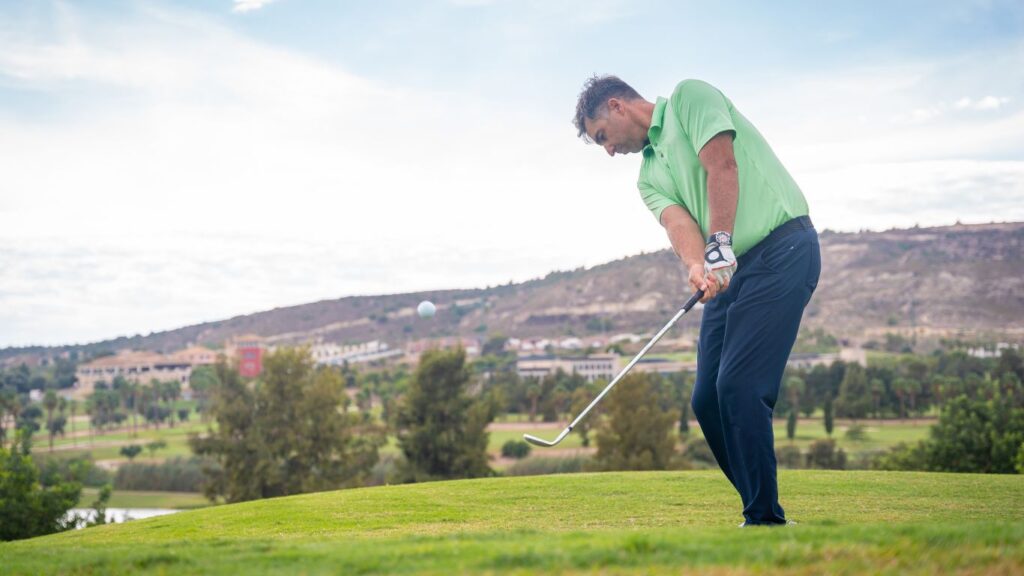
One of the first drills you can try is the “inside-out” drill. This drill can help you correct your swing path and prevent the club from coming over the top, which is a common cause of a slice. To do this drill, start by setting up as you usually would for a shot. As you swing back, focus on keeping your club on an inside path, bringing it back slightly to the inside of the target line. On your downswing, make sure to save the club on that inside path and follow through towards the target. This drill can help you develop a more consistent swing path and reduce the chances of hitting a slice.
Another helpful exercise is the “toe-up drill.” This drill can help you improve your release and prevent an open clubface, which can also cause a slice. To do this drill, start by taking your normal stance and grip on the club. As you swing back, focus on keeping the clubface square to the target line and the toe of the club pointing up towards the sky. On your downswing, make sure to save the clubface square and the toe of the club pointing towards the target. This drill can help you develop a more neutral release and reduce the chances of hitting a slice.
A great way to work on your swing path and release is to use alignment rods or clubs on the practice range. Place one alignment rod or club on the ground parallel to your target line and another one a few feet to the inside of the target line. This setup can help you visualize the proper swing path and release and give you immediate feedback on whether you’re swinging on the correct path. Practice hitting shots with this setup to help ingrain the correct movements into your swing and reduce the chances of hitting a slice.
In addition to drills, there are exercises you can do off the course to help correct a slice. One crucial aspect to focus on is your core strength. A strong core can help you maintain a stable base and produce more power in your swing, leading to more consistent ball striking. Incorporating exercises such as planks, Russian twists, and medicine ball throws into your workout routine can help improve your core strength and overall golf game.
Another essential aspect to focus on is your flexibility. A lack of flexibility can hinder your ability to rotate your body correctly during the swing, leading to compensations that can result in a slice. Incorporating exercises such as shoulder stretches, torso twists and hip stretches can help improve your flexibility and allow for a more fluid and efficient swing.
By incorporating these drills and exercises into your practice routine, you can work towards correcting a slice in your golf game. Remember to be patient and consistent in your efforts, as improvement takes time and effort. With dedication and practice, you can overcome a slice and enjoy more consistent and enjoyable rounds on the course.
Seeking professional help and guidance
If you’ve been struggling with a slice in your golf game and haven’t been able to correct it on your own, seeking professional help and guidance from a golf instructor or coach may be the next best step for you.
A golf professional can provide you with personalized feedback and instruction tailored to your specific swing and mechanics. They will observe your swing, analyze your form, and pinpoint the root cause of your slice. Having a trained eyewatch and assessing your swing can help you gain insight into what you may be doing wrong and what adjustments need to be made.
Working with a golf instructor also allows for real-time feedback and correction. They can guide you through drills and exercises that target the specific issues causing your slice. They can provide you with valuable tips and techniques to improve your swing path, clubface angle, and body positioning. By practicing under their guidance, you can start to make the necessary adjustments to fix your slice.
In addition to technical instruction, a golf professional can also help you develop a better understanding of the mental aspect of the game. They can teach you how to stay focused, manage your emotions, and maintain a positive attitude on the course. Building mental toughness can help you overcome the frustration and self-doubt that often come with struggling to fix a slice.
Furthermore, working with a golf instructor can help you set realistic goals and track your progress over time. They can create a personalized improvement plan for you, outlining the steps you need to take to fix your slice. By setting small, achievable goals and consistently working towards them, you can gradually make meaningful improvements in your swing and overall game.
Another advantage of seeking professional help is that it provides accountability and motivation. Knowing that you have a coach or instructor waiting for you at your next lesson can encourage you to stay committed to practicing and improving. Having someone to support and encourage you along the way can boost your confidence and keep you dedicated to fixing your slice.
Overall, seeking professional help and guidance for your golf slice can be a game-changer in your journey to improve your game. A golf instructor can offer personalized feedback, technical instruction, mental coaching, goal-setting, and accountability to help you make lasting changes to your swing. With the proper guidance and support, you can develop the skills and mindset needed to correct your slice and start playing better golf.
10 Frequently Asked Questions
1. What causes a slice in golf?
A slice in golf is typically caused by an open clubface at impact. When the clubface is not square to the intended target line, the ball will spin to the right (for right-handed golfers), resulting in a slice.
2. How can I prevent slicing the ball?
To prevent slicing the ball, it is essential to focus on your grip, setup, and swing path. Make sure your grip is neutral, your stance and alignment are correct, and your swing path is inside to outside. Practice drills to help you consistently hit the ball with a square clubface at impact.
3. Can equipment help fix a slice?
While equipment can make a difference in your game, fixing a slice ultimately comes down to your swing mechanics. However, using equipment such as a driver with adjustable weights or a different shaft flex may help you reduce a slice.
4. What is the difference between a slice and a fade?
A slice and a fade are both shots in golf that curve to the right for right-handed golfers. The critical difference is the severity of the curve – a slice is a more extreme and often unintentional shot, while a fade is a controlled shot that players use deliberately.
5. How can I develop a fade instead of a slice?
To develop a fade:
- Focus on controlling your clubface and swing path.
- Aim slightly left of your target, create an open clubface at the address, and swing along an inside-out path.
- Practice hitting shots that intentionally fade to the right until you can replicate the shot consistently.
6. Should I seek professional help to fix my slice?
Seeking professional help from a golf instructor can be beneficial if you are struggling to fix your slice on your own. A golf instructor can analyze your swing, provide personalized feedback, and offer drills to help you correct your slice.
7. Can I fix my slice on my own?
While fixing a slice can be challenging, it is possible to work on it independently through practice and dedication. Utilize resources such as instructional videos, golf books, and training aids to improve your swing mechanics and reduce your slice.
8. How long does it take to fix a slice?
The time it takes to fix a slice varies for each golfer and depends on factors such as skill level, practice frequency, and dedication to making changes. It may take weeks or even months to see significant improvements in your slice.
9. Will fixing my slice improve my overall golf game?
Fixing your slice can lead to more consistent and accurate shots, which can ultimately improve your overall golf game. By developing a more neutral ball flight, you score better and enjoy the game more.
10. How can I stay motivated while working on fixing my slice?
To stay motivated while working on fixing your slice, set specific goals, track your progress, and celebrate small victories along the way. Remember that improvement takes time and effort, so stay patient and focused on your ultimate goal of reducing your slice.
Conclusion
Fixing a slice in golf can be a frustrating challenge for many players, but with the proper techniques and practice, it is definitely achievable. By focusing on your grip, alignment, and swing path, you can start to see improvements in your game. Remember to be patient with yourself and stay dedicated to making the necessary adjustments. With time and effort, you can conquer that slice and start hitting straighter, more accurate shots on the course. Happy golfing!






